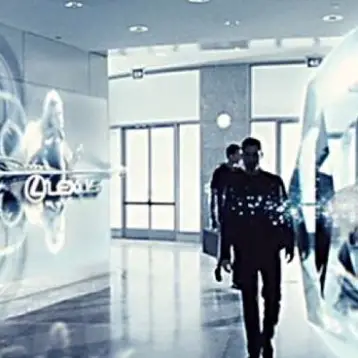|
According to Professor Geoffrey A. Ozin from the Department of Chemistry in the University of Toronto, who developed the new photonic crystals with Opalux, P-Ink is made of a metallopolymer opal gel. The metallopolymer opal gel reversibly swells and shrinks when electricity is applied or removed. Another similar photonic crystal developed by Ozin is called Elast-Ink. Elast-Ink is made of an elastomeric opal that undergoes reversible dimensional changes in accordance with the mechanical force applied to it.
Until now, photonic crystals only reflected a very specific wavelength that could not be changed after the crystal was formed. Opalux was able to produce a photonic crystal that is electrically tunable, meaning that is can reflect different wavelengths. Because the crystals are able to reflect light in many wavelengths, they can display an array of colors, ranging from Ultra-Violet to Infra-Red, and including the entire visible spectrum of light. The photonic crystals are embedded within a sponge-like electro-active polymer, which is laid between electrodes. An electrolyte fluid controls the electricity applied to the crystals.
According to Opalux, their photonic crystals technology has many advantages, including high brightness, low power consumption, a relatively quick response time (Opalux states sub-second switching speed – sufficient for text and images but not for video), potential flexibility and durability. Cost, which is a major factor in current electronic paper technology, should increase only linearly in accordance with the size of the e-paper.
Opalux is currently working on developing the first prototype e-paper based on P-ink technology, aimed at the commercial billboard market. It will be interesting to see whether this technology will indeed reach a commercial stage and progress into other markets such as the electronic-book market, which currently includes only monochromatic devices.
|
A second technology currently under development by Opalux is based on Elast-Ink, which according to the company, can be activated by mechanical pressure alone. According to the company, the Elast-Ink can be used without electrical power or an attached network and includes visible (color) instant verification. The technology could be used for a variety of biometric-based security devices that require very low or even no power at all.
TFOT recently published a comprehensive article entitled The Future of Electronic Paper covering the history, technology and future of this important and innovative new technology.
More information can be found on Opalux’s website, while a more technical coverage of photonic crystal technology can be found in Professor Ozin’s article (PDF).
Further discussion of photonic crystals and their applications can be found in the TFOT forums.











